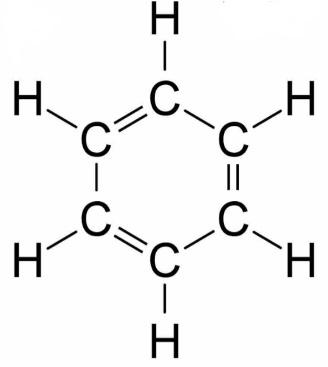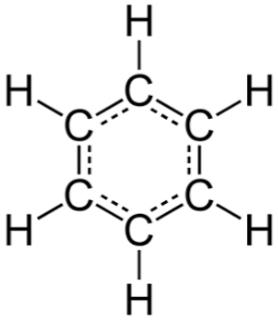
Answer
458.4k+ views
Hint:To solve this question, we should know that all carbon – carbon bonds in benzene are partially double bonded to each other due to resonance and there is no carbon – carbon single bond.
Complete step by step answer:
As we know that benzene has six carbons and six hydrogens with chemical formula ${C_6}{H_6}$ and also we know that its structure is:

For option A.)
In this option, by monosubstituted products we mean that one hydrogen is replaced by another atom or molecule. Benzene can form only one type of monosubstituted means that it cannot form different atoms just by replacing the position of attached atom like in ortho, para or meta position which occurs when two atoms are attached to it. Hence it forms only one type of monosubstituted product.
For option B.)
In benzene, we have all bonds as partially double bonds this is because the pi bonds in the benzene ring delocalised around the ring. This delocalisation provides partial double bond character to all the carbons. Hence, all carbons will have partial double bond character.
The delocalised structure of benzene can be given as:

For option C.)
In this option, heat of hydrogenation can be understood as the measure of stability of carbon – carbon double bonds. When stability is high, then the heat of hydrogenation is low. In benzene, as we know there is resonance and delocalisation which makes it more stable. Due to this delocalisation, its heat of hydrogenation is lower than its theoretical value.
For option D.)
In benzene, each carbon atom has \[s{p^2}\]hybridisation and it is because each carbon is attached with carbon and hydrogen have 1 pi bonds and one pi bond. Due to this, it has a steric number (bone pairs plus lone pairs) is three(one of pi bond and two from two sigma bonds). For steric number three, the hybridisation is \[s{p^2}\]. As we know now that benzene is \[s{p^2}\] thus it has bond angle $120^\circ $.
Hence, option B.) is the correct option..
Note:
For the structure of benzene sometimes we get confused that it has three double bonds and three single bonds but we should always remember that benzene keeps on delocalisation which makes all carbon - carbon bonds as partially pi bonds.
Complete step by step answer:
As we know that benzene has six carbons and six hydrogens with chemical formula ${C_6}{H_6}$ and also we know that its structure is:

For option A.)
In this option, by monosubstituted products we mean that one hydrogen is replaced by another atom or molecule. Benzene can form only one type of monosubstituted means that it cannot form different atoms just by replacing the position of attached atom like in ortho, para or meta position which occurs when two atoms are attached to it. Hence it forms only one type of monosubstituted product.
For option B.)
In benzene, we have all bonds as partially double bonds this is because the pi bonds in the benzene ring delocalised around the ring. This delocalisation provides partial double bond character to all the carbons. Hence, all carbons will have partial double bond character.
The delocalised structure of benzene can be given as:

For option C.)
In this option, heat of hydrogenation can be understood as the measure of stability of carbon – carbon double bonds. When stability is high, then the heat of hydrogenation is low. In benzene, as we know there is resonance and delocalisation which makes it more stable. Due to this delocalisation, its heat of hydrogenation is lower than its theoretical value.
For option D.)
In benzene, each carbon atom has \[s{p^2}\]hybridisation and it is because each carbon is attached with carbon and hydrogen have 1 pi bonds and one pi bond. Due to this, it has a steric number (bone pairs plus lone pairs) is three(one of pi bond and two from two sigma bonds). For steric number three, the hybridisation is \[s{p^2}\]. As we know now that benzene is \[s{p^2}\] thus it has bond angle $120^\circ $.
Hence, option B.) is the correct option..
Note:
For the structure of benzene sometimes we get confused that it has three double bonds and three single bonds but we should always remember that benzene keeps on delocalisation which makes all carbon - carbon bonds as partially pi bonds.
Recently Updated Pages
How is abiogenesis theory disproved experimentally class 12 biology CBSE

What is Biological Magnification

Explain the Basics of Computer and Number System?

Class 11 Question and Answer - Your Ultimate Solutions Guide

Write the IUPAC name of the given compound class 11 chemistry CBSE

Write the IUPAC name of the given compound class 11 chemistry CBSE

Trending doubts
Proton was discovered by A Thomson B Rutherford C Chadwick class 11 chemistry CBSE

What organs are located on the left side of your body class 11 biology CBSE

How many squares are there in a chess board A 1296 class 11 maths CBSE

State the laws of reflection of light

What are ekaboron ekaaluminium and ekasilicon class 11 chemistry CBSE

Three moles of B2H6 are completely reacted with methanol class 11 chemistry CBSE




